#Pros and Cons of mongodb
Explore tagged Tumblr posts
Text
The ways to develop a website

You can approach various ways to developer website but depending on your goals, technical skill, and also resources. Below is an overview of the primary methods to develop a website:
1. Using website builders
Website builders are allow you to create website without calling knowledge and it is user friendly platform also. They offer pre designed templates and drag and drop interfaces.
• Popular tools: wordpress. com, shopify for eCommerce, wix, squarespace etc.
• How it works:
° You can choose the template that you want.
° Customize the design, layout and also content with using visual editor of the platform.
° You can also add forms, eCommerce, or blogs to plugins or also in built tools.
° Then publish the site with hosting that provided by the platform.
• Pros:
° No coding required and it is beginner friendly.
° Fast setup and development.
° Hosting, security and also updates are included.
• Cons:
°Compared to coding it have limited customisation.
° Monthly subscription costs.
° Migrating can be challenging because of platform dependency.
2. Content management system(CMS)
It require minimal coding and it allows you to manage website content efficiently with the customizable themes and plugins.
• Popular tools: wordpress. org, Joomla, drupal
• How it works:
° Install the CMS on a web server.
° With the basic coding or in built tool, you can select a theme and customize.
° To add functionality you can use plugins.
° Then you can manage content through dashboard.
• Pros:
° It is flexible and scalable and also it have thousands of themes and plugins.
° Provide community support and resources.
° It is useful for portfolios or blogs and also Complex sites.
• Cons:
° You should require some technical knowledge for the set up and maintenance.
° It have hosting and domain cost.
° It need security updates as also backups.
3. Coding from scratch (custom development)
Build a website with the raw code, it can give you complete control over design and functionality.
• Technologies:
° Frontend: HTML, CSS, JavaScript.
° Backend: python, PHP, Ruby, and node. JS
° Database: MySQL, mongoDB,postgreSQL.
° Tools: code editor, hosting, version control.
• How it works:
° You can design the site structure and visuals by using HTML/ CSS/ or JavaScript.
° For dynamic features build back end logic.
° You can connect to a database for data storage.
• Pros:
° Offers full customisation and flexibility.
° Unique functionality and also optimized performance.
° No platform restrictions.
• Cons:
° It requires coding expertise.
° Costly and also time intensive.
° Require ongoing maintenance such as security, updates.
4. Static site generator
It can create fast, and also secure website by pre rendering HTML files. It is useful for Blogs, or portfolios.
• Popular tools: Hugo, Jekyll, Next. js.
• How it works:
° You can write content in markdown or also similar format.
° Use template to generate static HTML, CSS, or JavaScript files.
° Use hosting platform like netlify,or vercel.
• Pros:
° It is fast and Secure and no server side processing.
° It provide free or low cost hosting.
° Easy to scale.
• Cons:
° It has Limited functionality.
° It required some technical knowledge.
5. Headless CMS with frontend frameworks
A headless CMS can provide a backend for content management with the conctent frontend for flexibility.
• Popular tools:
° Headless CMS: Strapy, contentful etc.
° Frontend framework: React, Vue. js etc
• How it works:
° To manage content via APIs, use headless CMS.
° With JavaScript framework built a custom frontend.
° To display the dynamic content connect both via APIs.
• Pros:
° Very much flexible and scalable.
° Allowing reuse across platforms such as web, mobile.
° Modern and also performant.
• Cons:
° It require coding skill and also familiarity with APIs.
° The setup can be complex.
6. Hiring a developer or agency
If you don't have time or lack of Technical skill, you can you can hire developer or agency.
• How it work:
° For custom development you can higher freelancers or agencies.
° They can provide your requirement such as design , features, and budget.
° In collaborate on design and functionality then launch the website.
• Pros:
° They provide professional result with your needs.
° Save time.
• Cons:
° Cost can be higher.
° Depend on third parties for maintenance.
7. Low code platforms
Low code platforms fill the gap between no code Builders and custom coding. And they offering visual development with the coding flexibility.
• Popular tools: bubble, Adalo, Outsystems.
• How it works:
° To design and configure the site, use Visual interface.
° And some custom code for specific features.
° Use built in or external hosting.
• Pros:
° It is faster than coding from scratch.
° You can offer more customizable than website Builders.
• Cons:
° Learning curve for advanced features.
° Require subscription or hosting cost.
Choosing the right method
• Beginners: if you are a beginner you can start the with the website Builders or wordpress.
• Budget conscious: if you are conscious about your budget you can use static site generators or also free CMS options.
• Developers: opt for custom coding or headless CMS for whole control.
• Businesses: for businesses, it is good to consider hiring professionals or using scalable CMS platform.
If you are looking for a website development with design, it is smart to work with an experienced agency. HollyMinds Technologies is a great choice, because they are the best website development company in Pune, and they make websites that are perfectly coded and structured to stand the test of time. The algorithms are set to bring visitors from across the globe. A structured website with right content, can bring more visitors to your business.
1 note
·
View note
Text
How to Choose the Right Tech Stack for Mobile App Development for iOS and Android

In today’s digital world, mobile apps are no longer a luxury-they’re a necessity. Whether you’re a startup with a disruptive idea or an established business looking to expand your digital footprint, investing in mobile app development for iOS and Android is a smart move. However, one of the most critical decisions you’ll face early on is choosing the right tech stack.
The tech stack-the combination of programming languages, frameworks, and tools used in app development-will directly impact your app’s performance, scalability, cost, and time-to-market. Selecting the wrong stack can result in a slow, buggy app or an inflated budget. On the other hand, choosing the right one sets the foundation for a smooth development process and long-term success.
In this blog, we’ll walk you through the essential factors to consider when selecting a tech stack for mobile app development for iOS and Android, and how a custom mobile app development company can guide you in making the right choices.
1. Understand the Project Requirements
Before diving into specific technologies, outline the goals and features of your app:
What’s the core functionality?
Do you need real-time features like chat or location tracking?
Will your app rely heavily on graphics or animations?
What platforms do you want to target-iOS, Android, or both?
What’s your timeline and budget?
Knowing these answers will help you and your development team match the right technologies to your needs.
2. Native vs. Cross-Platform Development
This is often the first fork in the road when choosing a tech stack:
Native Development
If performance, speed, and full access to platform-specific features are a priority, native development is your best bet.
iOS: Swift or Objective-C
Android: Kotlin or Java
Native apps generally provide a smoother user experience and better performance, but they also require separate codebases-meaning higher development costs and longer timelines.
Cross-Platform Development
Cross-platform frameworks allow you to write one codebase and deploy it to both platforms. Popular choices include:
React Native (JavaScript)
Flutter (Dart)
Xamarin (C#)
These tools are ideal for startups or businesses looking to enter the market quickly. A custom mobile app development company can help you weigh the pros and cons based on your app’s complexity and user expectations.
3. Frontend and Backend Technologies
Your mobile app isn’t just the user interface-it likely requires a backend to handle data storage, user authentication, and other services.
Frontend
For cross-platform apps:
React Native (by Facebook): Great for dynamic UIs and native-like performance.
Flutter (by Google): Ideal for high-performance, visually rich applications.
Backend
Popular backend stacks include:
Node.js: Scalable and event-driven, great for real-time applications.
Django (Python): High-security applications and rapid development.
Laravel (PHP): Suitable for content-heavy or enterprise apps.
Firebase: Backend-as-a-Service (BaaS), good for MVPs and quick development cycles.
Your choice should align with the expected user load, app features, and scalability requirements.
4. Database Choices
Your app’s data storage needs also affect your tech stack. Some common options are:
SQLite: Lightweight and good for local storage.
Realm: Ideal for real-time applications.
Firebase Realtime Database or Firestore: Best for cloud-based apps.
PostgreSQL or MongoDB: Suitable for complex, high-volume applications.
A custom mobile app development company can assess which database suits your app based on its size, structure, and security needs.
5. Security Considerations
Security should never be an afterthought. The right tech stack must support modern security standards, including:
Data encryption
Secure authentication (OAuth 2.0, JWT)
Compliance with regulations (e.g., GDPR, HIPAA)
Ensure your chosen technologies are actively maintained and widely used, so you benefit from community support and security patches.
6. Scalability and Maintenance
A good tech stack doesn’t just work today-it should be easy to maintain and scale tomorrow. Technologies with strong community support and regular updates are better choices in the long run.
You’ll also want to consider:
Ease of hiring developers
Cost of long-term maintenance
Integration capabilities with third-party services
7. Work With Experts
Choosing the right tech stack isn’t just about picking popular tools-it’s about selecting the right tools for your specific project. That’s where partnering with a custom mobile app development company can make a difference. They bring experience across multiple stacks and can offer strategic guidance, helping you avoid costly mistakes and focus on what matters most: building a successful product.
Choosing the right tech stack for mobile app development for iOS and Android is a foundational step in your digital journey. From native vs. cross-platform development to backend services and database choices, each decision impacts the app’s performance, cost, and future scalability.
If you’re unsure where to begin, a reputable custom mobile app development company like iTechVision can provide the expertise needed to turn your vision into a high-performing, user-friendly app.
0 notes
Text
🌍 Popular Locations to set up an ODC in 2025
When establishing an Offshore Development Center (ODC), location is important. Discover which region fits your goals and why these hotspots are leading the offshore development trend. Here's an overview of popular regions:
1. Asia-Pacific: Cost-Effective & Skilled Talent
Vietnam 🇻🇳: The Rising Star
* Cost: Highly competitive (30-50% lower than Western Europe/US).
* Talent: Strong software engineering skills, growing tech ecosystem.
* Tech Stacks: Java, JavaScript, C#/.NET, Python, Go.
* Time Zone: UTC+7.
* Pros: Tax incentives, growing startup scene.
* Cons: Potential communication challenges.
India 🇮🇳: The Largest IT Hub
* Cost: Competitive but rising in major cities.
* Talent: Vast developer pool, strong SaaS industry.
* Tech Stacks: MongoDB, Express.js, React.js, Node.js, Java, C#.
* Time Zone: UTC+5:30.
* Pros: Well-developed tech parks, strong connectivity.
* Cons: Time zone differences, rising salaries.
Philippines 🇵🇭: Customer Support & IT Services
* Cost: Lower than India and Vietnam.
* Talent: Strong English proficiency, established IT infrastructure.
* Tech Stacks: Linux, PHP, Python, MongoDB, Express.js, Angular, Node.js.
* Time Zone: UTC+8:00.
* Pros: High English proficiency.
* Cons: Limited AI/blockchain expertise, BPO focus.
2. Eastern Europe: Strong Tech Talent & EU Compliance
Ukraine 🇺🇦:
* Cost: Higher than Asia.
* Talent: Strong technical skills.
* Tech Stacks: Linux, PHP, Python, JavaScript, MongoDB, .NET.
* Time Zone: UTC+3.
* Pros: Strong tech talent.
* Cons: Geopolitical instability, higher costs.
Poland 🇵🇱: EU-Based Companies
* Cost: Higher than Asia.
* Talent: Access to EU market, strong fintech innovation.
* Tech Stacks: Python, Java, JavaScript, C#, C++, PHP, .NET.
* Time Zone: UTC+2.
* Pros: EU compliance, strong talent pool.
* Cons: Higher costs.
3. Latin America: Best for US-Based Companies
Mexico 🇲🇽: Proximity & Cost-Effectiveness
* Cost: Mid-range.
* Talent: Growing IT sector, good for nearshore/onshore projects.
* Tech Stacks: Python, Java, JavaScript, Ruby on Rails, .NET.
* Time Zone: UTC-6.
* Pros: Proximity to the US, overlapping work hours.
* Cons: Higher costs than some Asian countries.
Brazil 🇧🇷: Largest IT Market in Latin America
* Cost: Mid-range.
* Talent: Strong AI/ML development, large English-speaking workforce.
* Tech Stacks: Python, JavaScript, Kotlin, Ruby on Rails, PHP, Java.
* Time Zone: UTC-3.
* Pros: Large IT market, strong AI/ML capabilities.
* Cons: Complex tax systems.
Choosing the right ODC location requires careful consideration of your specific needs and priorities.
🔗 Check out the full article here: https://saigontechnology.com/blog/offshore-development-center/

#SaigonTechnology#OffshoreDevelopmentCenter#ODC#Vietnam#India#Philippines#EasternEurope#LatinAmerica
0 notes
Text
What is the MERN Stack? A Beginner’s Guide
Have you ever thought about how these modern web applications are made? What is the process of making these applications? What technologies are used to build this full-stack web application? Well, you will get all your answers in this blog, where you will know what is MERN Stack, what MERN Stack technologies are, what its pros and cons are, and how to become a MERN Stack developer.
What is MERN Stack?
MERN Stack is a web development technology that developers use. It is a collection of JavaScript-based technologies used for building efficient and scalable web applications. This makes it easy for developers because they have to use a single language across the entire stack, streamlining the development process. MERN Stack consists of four key technologies;
M — MongoDB (Database)
E — Express (Backend Framework)
R — React.JS (Frontend Framework)
N — Node.JS (Runtime Environment)
What are MERN Stack Technologies?
MERN Stack is the best choice for beginners as it uses only JavaScript across all layers and simplifies the learning process for them. The MERN Stack includes four technologies, and each plays a crucial role in the development process. Let’s explain it in detail:
1. MongoDB
MongoDB is a NoSQL database product that is used to store application data. It saves information in a flexible way, which helps combine data quickly and easily. MongoDB is great for handling large volumes of data and complex structures, which are often found in web applications. It is highly scalable and flexible, and best for large amounts of information.
2. Express
Express uses Node.JS web application framework that simplifies the backend process. It is used for building APIs and makes it easy to handle server-side applications easily. Express has a user-friendly interface, which makes it easy to create web applications efficiently and it is best for beginners.
3. React.JS
React.JS is a free and open-source JavaScript library designed by Facebook, which is used for building user interfaces, particularly used to make single page applications (SPAs). It enables developers to build fast, reliable, and scalable web applications. React.js is used to create interactive frontend components for websites.
4. Node.JS
Node.js is a tool that lets you run JavaScript code outside of a web browser, usually on a server. Its event-driven model allows servers to process requests without waiting for data to be returned. Node.JS is used to develop fast, non-blocking systems.
Pro And Cons of Using MERN Stack
The MERN Stack is highly popular among developers, as it offers various advantages, but not every developer uses it. There are some disadvantages to using it also. In this section, let’s look at the pros and cons of using MERN Stack in detail:
Pros
Easy to Learn: MERN Stack is easy to learn if the developers have detailed knowledge of JavaScript. Its development, freedom, and simplicity make it a great choice for building robust applications. Developers can benefit greatly from learning the MERN Stack.
Scalability and Performance: The MERN Stack is suitable for building applications that can handle large databases and high traffic. MongoDB, Express and React.JS are known for their scalability and high performance, making them the best for modern web applications.
Quick Development: With the MERN Stack, developers can use JavaScript for both frontend and backend development, which speeds up the development process. This reduces context switching between different programming languages and helps prevent potential errors.
Cons
Learning Curve: Even though JavaScript is used everywhere each part of MERN Stack works differently and it might be tricky for beginners to learn it. Mastering all these components can be time-consuming.
Poor Scalability: Even though MongoDB is highly scalable, poor database design can slow it down. The MERN Stack can have trouble handling a lot of data, and some developers may find it difficult to scale web applications.
Lack of JavaScript Coding Guidelines: The MERN Stack does not have a set of coding guidelines in written. If there are not fixed guidelines, it can be hard to maintain readability, and quality of code.
Roadmap to Become a MERN Stack Developer
Web development is a top career these days. If you are passionate about becoming a MERN Stack developer, you can look at the following MERN Stack roadmap to begin your career in this field:
Learn Foundational Languages: Begin by learning the fundamental web development languages like HTML, CSS, and JavaScript, then dive deep into the MERN Stack technologies. The main language that is used in MERN Stack is JavaScript, so you need to have a detailed knowledge of this language.
Enroll in an Online Course: There are various options available to begin learning. Read online tutorials, enroll in online courses, and stay updated on the latest news in web development.
Become Experts in MERN Stack Technologies: Before you start coding, install Node.js and MongoDB on your system. Learn each part of the MERN Stack one at a time. Start with one, understand how it works, and then move to the next. Study the features and workings of each technology and become an expert.
Practice Building Projects: You must practice a lot by working on various projects. Start by building simple applications and gradually move to more complex ones.
Conclusion
The MERN Stack is a full stack JavaScript solution used for building high performing and efficient applications. By using MERN Stack technologies developers can streamline their development process and create modern web applications.
If you are looking for a MERN Stack development company, you can reach out to Knotsync for expert solutions. Contact us today!
Original Source: https://knotsync.com/what-is-the-mern-stack/
0 notes
Text
How to Deploy Your Full Stack Application: A Beginner’s Guide
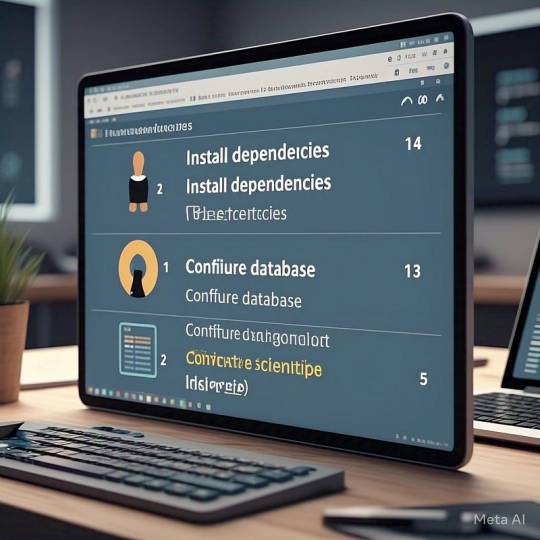
Deploying a full stack application involves setting up your frontend, backend, and database on a live server so users can access it over the internet. This guide covers deployment strategies, hosting services, and best practices.
1. Choosing a Deployment Platform
Popular options include:
Cloud Platforms: AWS, Google Cloud, Azure
PaaS Providers: Heroku, Vercel, Netlify
Containerized Deployment: Docker, Kubernetes
Traditional Hosting: VPS (DigitalOcean, Linode)
2. Deploying the Backend
Option 1: Deploy with a Cloud Server (e.g., AWS EC2, DigitalOcean)
Set Up a Virtual Machine (VM)
bash
ssh user@your-server-ip
Install Dependencies
Node.js (sudo apt install nodejs npm)
Python (sudo apt install python3-pip)
Database (MySQL, PostgreSQL, MongoDB)
Run the Server
bash
nohup node server.js & # For Node.js apps gunicorn app:app --daemon # For Python Flask/Django apps
Option 2: Serverless Deployment (AWS Lambda, Firebase Functions)
Pros: No server maintenance, auto-scaling
Cons: Limited control over infrastructure
3. Deploying the Frontend
Option 1: Static Site Hosting (Vercel, Netlify, GitHub Pages)
Push Code to GitHub
Connect GitHub Repo to Netlify/Vercel
Set Build Command (e.g., npm run build)
Deploy and Get Live URL
Option 2: Deploy with Nginx on a Cloud Server
Install Nginx
bash
sudo apt install nginx
Configure Nginx for React/Vue/Angular
nginx
server { listen 80; root /var/www/html; index index.html; location / { try_files $uri /index.html; } }
Restart Nginx
bash
sudo systemctl restart nginx
4. Connecting Frontend and Backend
Use CORS middleware to allow cross-origin requests
Set up reverse proxy with Nginx
Secure API with authentication tokens (JWT, OAuth)
5. Database Setup
Cloud Databases: AWS RDS, Firebase, MongoDB Atlas
Self-Hosted Databases: PostgreSQL, MySQL on a VPS
bash# Example: Run PostgreSQL on DigitalOcean sudo apt install postgresql sudo systemctl start postgresql
6. Security & Optimization
✅ SSL Certificate: Secure site with HTTPS (Let’s Encrypt) ✅ Load Balancing: Use AWS ALB, Nginx reverse proxy ✅ Scaling: Auto-scale with Kubernetes or cloud functions ✅ Logging & Monitoring: Use Datadog, New Relic, AWS CloudWatch
7. CI/CD for Automated Deployment
GitHub Actions: Automate builds and deployment
Jenkins/GitLab CI/CD: Custom pipelines for complex deployments
Docker & Kubernetes: Containerized deployment for scalability
Final Thoughts
Deploying a full stack app requires setting up hosting, configuring the backend, deploying the frontend, and securing the application.
Cloud platforms like AWS, Heroku, and Vercel simplify the process, while advanced setups use Kubernetes and Docker for scalability.
WEBSITE: https://www.ficusoft.in/full-stack-developer-course-in-chennai/
0 notes
Text

Redis vs. MongoDB: Which Database is Right for You?
Choosing between Redis and MongoDB for your project? Redis offers blazing-fast caching and real-time data processing, while MongoDB excels in handling large-scale, flexible document-based storage. Dive into the pros, cons, and use cases of both databases to find the perfect fit for your needs. Click the link to explore the full comparison and unlock your next big project’s potential!
0 notes
Text
Building Scalable Web Applications: Tips and Techniques
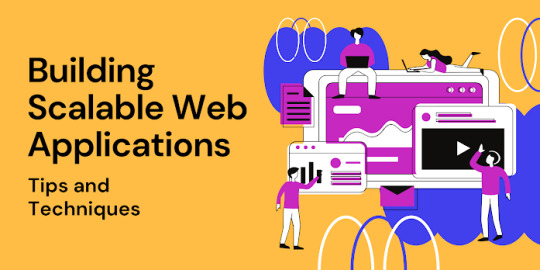
In the ever-evolving world of web development, scalability has become a crucial factor for the success of online businesses. A scalable web application can handle increased loads without compromising performance, ensuring a smooth user experience and maintaining the integrity of the service. Whether you're developing a new application or looking to enhance an existing one, implementing the right strategies from the outset can make all the difference. Here are some tips and techniques to help you build scalable web applications.
1. Design with Scalability in Mind
The foundation of a scalable web application starts with its architecture. Design your application with the assumption that it will grow. This means considering how each component can scale independently and how new components can be added seamlessly. Use a modular approach to make it easier to scale specific parts of your application without affecting others.
2. Choose the Right Technology Stack
Selecting the appropriate technology stack is critical for scalability. Look for technologies that are known for their performance and scalability. For example, Node.js is a popular choice for building scalable network applications due to its non-blocking I/O model. Similarly, containerization technologies like Docker and orchestration tools like Kubernetes can greatly simplify the process of scaling microservices.
3. Embrace Microservices
Microservices architecture allows you to break down your application into smaller, independent services that can be scaled individually. This approach offers several advantages, including the ability to make changes to one service without affecting others and deploying services independently. It also makes it easier to use the best technology for each service, tailored to its specific needs.
4. Optimize Database Performance
Databases are often the bottleneck in web applications. To ensure scalability, optimize your database queries, use caching mechanisms, and consider sharding or replication. NoSQL databases like MongoDB or Cassandra can be more suitable for high-scalability needs compared to traditional relational databases. Always analyze your data access patterns to choose the right database technology.
5. Implement Caching
Caching is a powerful technique to reduce the load on your servers and improve response times. By storing frequently accessed data in a fast in-memory cache like Redis or Memcached, you can serve content more quickly and reduce the number of trips to the database. Be strategic about what data you cache and for how long, to ensure data consistency and freshness.
6. Use Content Delivery Networks (CDNs)
For applications that serve a global audience, latency can be a significant issue. CDNs can help by storing static content (like images, CSS, and JavaScript files) on servers located around the world. This ensures that users can access these resources from a server that is geographically closer to them, reducing load times and improving performance.
7. Monitor and Analyze Performance
Building a scalable web application is an ongoing process. Continuously monitor your application's performance and analyze user behavior to identify bottlenecks and areas for improvement. Tools like Google Analytics, New Relic, and Application Performance Monitoring (APM) solutions can provide valuable insights into how your application is performing and where it can be optimized.
8. Plan for Horizontal and Vertical Scaling
There are two primary methods of scaling: horizontal (scaling out) and vertical (scaling up). Horizontal scaling involves adding more machines to distribute the load, while vertical scaling means upgrading the existing hardware. Both methods have their pros and cons, and the best approach often depends on your specific needs and budget.
9. Automate Deployment and Scaling
Automation is key to managing scalable web applications efficiently. Use automated deployment tools like Jenkins or GitHub Actions to streamline the deployment process. For scaling, leverage cloud services that offer auto-scaling features, which can automatically adjust the number of servers based on demand.
10. Keep Learning and Stay Updated
The field of web development is constantly evolving, with new technologies and best practices emerging regularly. Stay informed about the latest trends in scalability and be ready to adapt your strategies as needed.
Conclusion
Building scalable web applications is a complex task that requires careful planning and execution. By following these tips and techniques, you can create applications that are robust, efficient, and capable of handling growth. Remember, scalability is not just about technology; it's also about the processes and practices that ensure your application can evolve and thrive in a rapidly changing digital landscape
0 notes
Text
How to Choose the Best Full Stack Developer Course
In today's rapidly evolving tech landscape, becoming a full-stack developer can open doors to numerous career opportunities. A full-stack development training program is essential in acquiring the skills to build both front-end and back-end applications. However, choosing the right one can be daunting, given the many courses available. This guide will help you select the best Full Stack Developer course for your needs.
Define Your Goals and Learning Objectives
Before exploring course options, it’s crucial to clarify your goals. Are you looking to switch careers, enhance your skill set, or explore a new hobby? Comprehending your objectives will help you identify the course that aligns with your aspirations. For instance, if you aim to secure a job as a full-stack developer, look for courses that offer comprehensive training and job placement assistance.
Consider Your Current Skill Level
Assess your knowledge and experience in web development with training programs ranging from beginner to advanced levels. If you are new to coding, opt for a beginner-friendly course that covers the basics of HTML, CSS, and JavaScript before delving into more complex topics. Conversely, if you have some experience, an advanced course focusing on modern frameworks and tools might be more suitable.
Course Curriculum
A well-structured curriculum is the backbone of any effective training program. Ensure the training covers the following key areas:
Front-End Development: HTML, CSS, JavaScript, and popular frameworks like React or Angular.
Back-End Development: Server-side languages like Node.js, Express.js, Python, or Ruby on Rails.
Databases: SQL (MySQL, PostgreSQL) and NoSQL (MongoDB) databases.
Version Control: Git and GitHub.
Deployment: Understanding cloud services like AWS, Heroku, or Azure.
Security: Basic principles of web security and best practices.
Check if the course offers hands-on projects and real-world applications, as practical experience is crucial for mastering full-stack development.
Learning Format: Online vs. In-Person
Which do you prefer: online or in-person learning? Each format has its pros and cons:
Online Courses: Offer flexibility, allowing you to learn at your own pace and schedule. They are often more affordable and accessible from anywhere. However, they require self-discipline and motivation.
In-person courses: These provide a structured learning environment with direct interaction with instructors and peers. They can be more engaging and offer immediate feedback but are less flexible and often more expensive.
Instructor Expertise
The quality of instruction can largely impact your learning experience. Research the instructors' backgrounds to check if they have relevant industry experience and expertise in full-stack development. Look for courses taught by professionals in reputable companies or with significant teaching experience.
Reviews and Testimonials
Student reviews and testimonials are invaluable resources for gauging the effectiveness of a course. Look for feedback on Course Report, SwitchUp, or social media groups. Pay attention to comments about the curriculum, teaching style, support, and overall satisfaction. High ratings and positive feedback from past students are good indicators of a quality course.
Job Placement Assistance
If you want to land a job after completing the course, consider programs offering job placement assistance. Many reputable courses provide career services, including resume reviews, interview preparation, and connections to hiring partners. Some even boast impressive job placement rates, which can give you confidence in their ability to help you transition into a full-stack development role.
Cost and Financial Aid
A Full Stack Developer course can range from free to several thousand dollars. While choosing the most affordable option is compelling, remember that quality education is an investment in your future. Consider the value you’re getting for the price. Some courses offer financial aid, scholarships, or instalment plans to make payments more manageable. Research these options to find a course that fits your budget without compromising quality.
Flexibility and Time Commitment
Evaluate the time commitment the course requires and whether it fits into your schedule. Some courses are intensive bootcamps designed to be completed in a few months, while others are more flexible, allowing you to study part-time over a longer period. Choose a course format that aligns with your availability and learning pace.
Accreditation and Certification
While not always necessary, accredited courses or those offering recognised certifications can add value to your resume. Certifications from reputable institutions or tech giants like Google, Microsoft, or Amazon can enhance your credibility and job prospects.
Conclusion
Choosing the best Full Stack Developer course involves careful consideration of your goals, current skills, learning preferences, and the course offerings. By thoroughly researching and evaluating your options based on curriculum, instructor expertise, reviews, job placement assistance, cost, and flexibility, you can find a course that meets your skilling needs and sets you on the road to becoming a successful full-stack developer. Remember, the right course is about acquiring knowledge and gaining the practical experience and support necessary to thrive in the tech industry.
0 notes
Text
Building Scalable Web Applications: Tips and Techniques
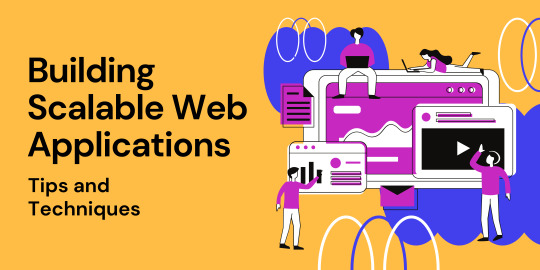
In the ever-evolving world of web development, scalability has become a crucial factor for the success of online businesses. A scalable web application can handle increased loads without compromising performance, ensuring a smooth user experience and maintaining the integrity of the service. Whether you're developing a new application or looking to enhance an existing one, implementing the right strategies from the outset can make all the difference. Here are some tips and techniques to help you build scalable web applications.
1. Design with Scalability in Mind
The foundation of a scalable web application starts with its architecture. Design your application with the assumption that it will grow. This means considering how each component can scale independently and how new components can be added seamlessly. Use a modular approach to make it easier to scale specific parts of your application without affecting others.
2. Choose the Right Technology Stack
Selecting the appropriate technology stack is critical for scalability. Look for technologies that are known for their performance and scalability. For example, Node.js is a popular choice for building scalable network applications due to its non-blocking I/O model. Similarly, containerization technologies like Docker and orchestration tools like Kubernetes can greatly simplify the process of scaling microservices.
3. Embrace Microservices
Microservices architecture allows you to break down your application into smaller, independent services that can be scaled individually. This approach offers several advantages, including the ability to make changes to one service without affecting others and deploying services independently. It also makes it easier to use the best technology for each service, tailored to its specific needs.
4. Optimize Database Performance
Databases are often the bottleneck in web applications. To ensure scalability, optimize your database queries, use caching mechanisms, and consider sharding or replication. NoSQL databases like MongoDB or Cassandra can be more suitable for high-scalability needs compared to traditional relational databases. Always analyze your data access patterns to choose the right database technology.
5. Implement Caching
Caching is a powerful technique to reduce the load on your servers and improve response times. By storing frequently accessed data in a fast in-memory cache like Redis or Memcached, you can serve content more quickly and reduce the number of trips to the database. Be strategic about what data you cache and for how long, to ensure data consistency and freshness.
6. Use Content Delivery Networks (CDNs)
For applications that serve a global audience, latency can be a significant issue. CDNs can help by storing static content (like images, CSS, and JavaScript files) on servers located around the world. This ensures that users can access these resources from a server that is geographically closer to them, reducing load times and improving performance.
7. Monitor and Analyze Performance
Building a scalable web application is an ongoing process. Continuously monitor your application's performance and analyze user behavior to identify bottlenecks and areas for improvement. Tools like Google Analytics, New Relic, and Application Performance Monitoring (APM) solutions can provide valuable insights into how your application is performing and where it can be optimized.
8. Plan for Horizontal and Vertical Scaling
There are two primary methods of scaling: horizontal (scaling out) and vertical (scaling up). Horizontal scaling involves adding more machines to distribute the load, while vertical scaling means upgrading the existing hardware. Both methods have their pros and cons, and the best approach often depends on your specific needs and budget.
9. Automate Deployment and Scaling
Automation is key to managing scalable web applications efficiently. Use automated deployment tools like Jenkins or GitHub Actions to streamline the deployment process. For scaling, leverage cloud services that offer auto-scaling features, which can automatically adjust the number of servers based on demand.
10. Keep Learning and Stay Updated
The field of web development is constantly evolving, with new technologies and best practices emerging regularly. Stay informed about the latest trends in scalability and be ready to adapt your strategies as needed.
Conclusion Building scalable web applications is a complex task that requires careful planning and execution. By following these tips and techniques, you can create applications that are robust, efficient, and capable of handling growth. Remember, scalability is not just about technology; it's also about the processes and practices that ensure your application can evolve and thrive in a rapidly changing digital landscape
#WebDevelopment#Scalability#SoftwareEngineering#PerformanceOptimization#HighAvailability#CloudComputing#LoadBalancing#Microservices#DistributedSystems#DevOps#WebArchitecture#BestPractices#WebApplicationDevelopment#BackendDevelopment#FrontendDevelopment
0 notes
Text
🛠️ Mastering MERN Stack: Your Path to Full-Stack Development! 💻 📑 Description: MERN Stack is a synergistic collection of technologies - MongoDB, Express.js, React.js, and Node.js - that empowers developers to create robust web applications. 🎉 Pros: MERN Stack offers a unified JavaScript development experience, making it easier to switch between client and server-side development, with a vast ecosystem of libraries and tools. 🚫 Cons: It may not be the best fit for projects that require relational databases or have a preference for other programming languages. 💡 Why it's a game-changer: MERN Stack's integration of four powerful technologies provides a streamlined workflow and a high-performance end product. 🛤️ Roadmap: Begin with JavaScript fundamentals, then tackle each part of the MERN Stack, building up your portfolio with hands-on projects to become a MERN Stack pro! #MERNStackMastery #FullStackDeveloper #WebDev
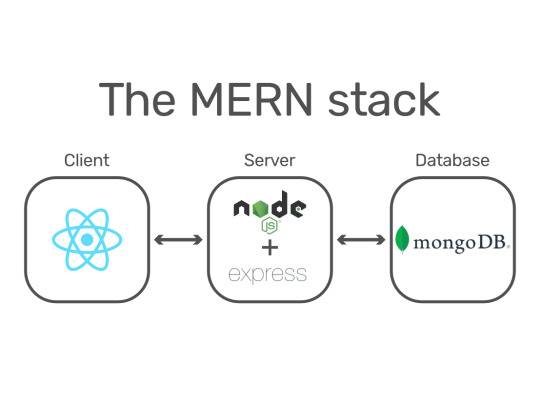


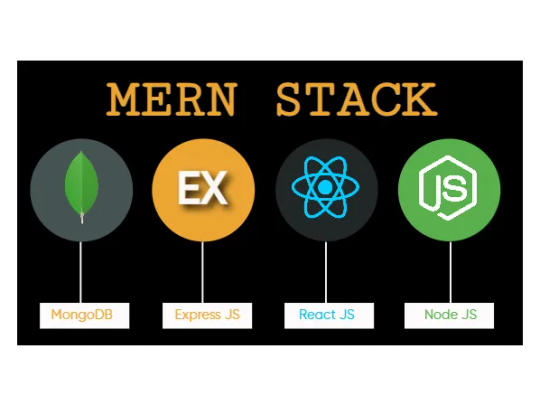
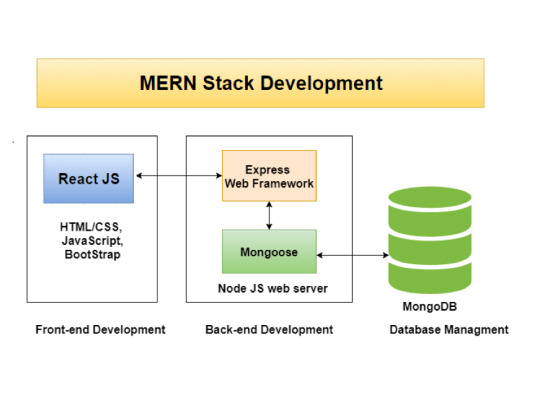
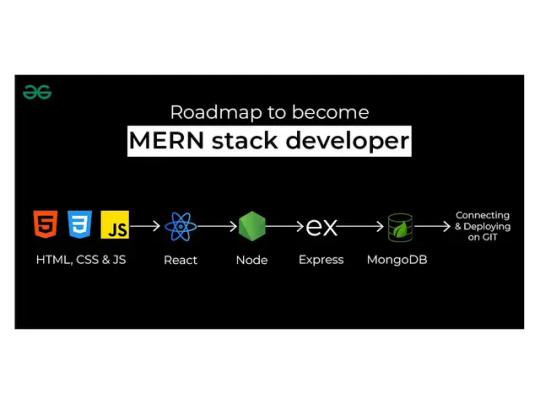
0 notes
Text
SQL Server Partitioning vs MongoDB Sharding for Very Large Databases
Introduction Hey there! If you’re working with very large databases that are multiple terabytes in size, you’ve probably run into performance challenges. I know I sure have! Two common approaches to optimize massive databases are partitioning tables in SQL Server or sharding data across servers in MongoDB. In this article, we’ll explore the pros and cons of each strategy to help you decide which…
View On WordPress
0 notes
Text
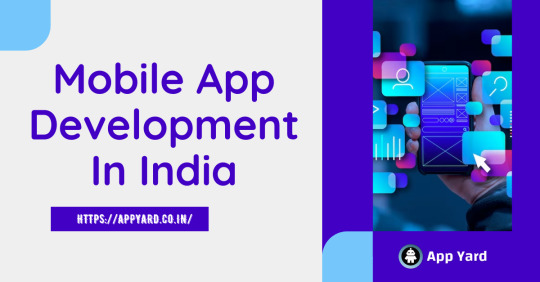
Mobile App Development: Crafting an Effective Technology Stack
Understanding Web Development:
Before we delve into the nuances of choosing a technology stack for your mobile app, let’s establish a foundational understanding of web development. Web development encompasses the creation of websites and web applications accessible through the internet. This multidimensional field incorporates various technologies, languages, and frameworks working in harmony to bring websites and applications to life.
Exploring App Development:
In contrast, app development zeroes in on crafting mobile applications tailored for smartphones and tablets. These apps can be designed for both iOS and Android platforms, offering unique user experiences tailored to each operating system. The app development process involves the phases of design, coding, testing, and deployment onto the respective app stores.
Deciphering the Right Technology Stack:
The technology stack chosen for your mobile app significantly influences its performance, scalability, and overall user experience. A technology stack comprises different layers, including front-end, back-end, and the database. Let’s delve into each layer and discern how to make informed choices for your mobile app.
Front-end Development:
The front-end layer concentrates on the user interface, ensuring a visually appealing and interactive experience. Factors like ease of use, cross-platform compatibility, and performance are pivotal when selecting front-end technologies. Noteworthy frameworks for mobile app development include React Native, Flutter, and Ionic.
Back-end Development:
The back-end layer manages server-side logic and data processing, facilitating seamless communication between the front-end and the database. Factors such as scalability, security, and developer-friendliness are crucial considerations when opting for back-end technologies. Popular choices include Node.js.
Database:
The database layer is responsible for storing and managing app data. When choosing a database technology, factors like data integrity, scalability, and performance come into play. Common database technologies for mobile app development include MySQL, PostgreSQL, and MongoDB.
Choosing the optimal technology stack hinges on factors such as app requirements, target audience, and development timeline. A thorough evaluation of each technology’s pros and cons is essential to align the stack with your app’s goals.
Conclusion:
Understanding the landscape of web development and navigating the complexities of app development are key prerequisites for creating a successful mobile app. By meticulously selecting the right technology stack, you can ensure your app’s performance, scalability, and user experience. Remember to weigh factors like front-end frameworks, back-end technologies, and database options when making your decision. So, why wait? Embark on the journey of building your dream mobile app today!
Website: https://appyard.co.in/
Medium: https://medium.com/@bhagyashrie1/top-website-design-trends-for-2024-f121c5d8f059
Blogger: https://appyardservice.blogspot.com/
Instagram: https://www.instagram.com/appyardofficial/
LinkedIn: https://www.linkedin.com/company/appyard/
#Mobile App Development#Mobile App Developmentin india#Mobile App Development in bangalore#Mobile App Development 2024#App Development#app design
1 note
·
View note
Text
What is MongoDB database, its working, pros & cons and difference between MongoDB(NoSQL) and MySQL(RDBMS) ?
What is MongoDB database ?MongoDB is a document-oriented NoSQL database system that provides high scalability, flexibility, and performance. Unlike standard relational databases, MongoDB stores data in a JSON document structure form. This makes it easy to operate with dynamic and unstructured data and MongoDB is an open-source and cross-platform database System. Where to use MongoDB […] The post What is MongoDB database, its working, pros & cons and difference between MongoDB(NoSQL) and MySQL(RDBMS) ? appeared first on TECH - WEB DEVELOPMENT NEWS. https://tech-webdevelopment.news-6.com/what-is-mongodb-database-its-working-pros-cons-and-difference-between-mongodbnosql-and-mysqlrdbms/
0 notes
Text
MongoDB Developer Certification
MongoDB Developer Certification assesses the ability to develop applications effectively using MongoDB. It covers critical areas such as data modeling, indexing, and querying, ensuring certified developers can contribute to high-performance MongoDB-based solutions.
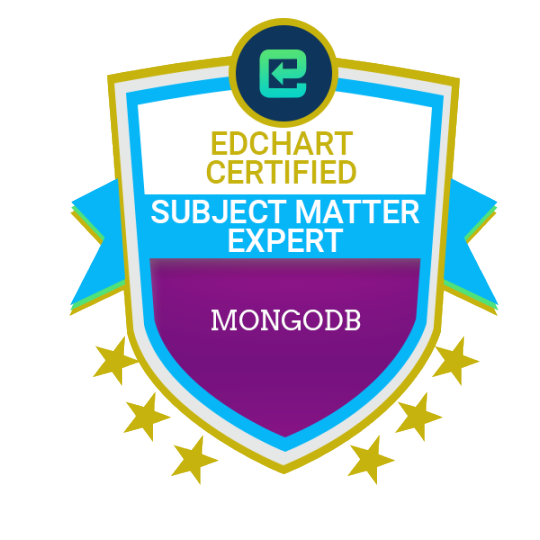
MongoDB Developer Certification Overview MongoDB Developer Certification validates expertise in utilizing MongoDB, a popular NoSQL database, for application development. This certification ensures proficiency in designing efficient data models, querying data, and leveraging MongoDB's features. It is ideal for developers seeking recognition of their MongoDB skills and the ability to contribute to scalable and flexible database solutions.
Description of MongoDB Developer A MongoDB Developer specializes in creating, maintaining, and optimizing applications that utilize MongoDB as the underlying database. They are adept at data modeling, querying, and ensuring seamless integration with various programming languages, making them pivotal in developing high-performance database solutions.
Scopes of MongoDB Developer Career MongoDB Developers have extensive career opportunities in industries such as finance, healthcare, and technology. Roles include MongoDB Developer, Database Engineer, or Application Developer. The demand for MongoDB Developers is on the rise as businesses increasingly rely on data-driven applications.
Pros of Using MongoDB Developer: MongoDB Developer offers flexibility, scalability, and ease of development, making it suitable for dynamic data requirements. Its document-based model and support for various data types provide developers with a robust toolset for building modern applications.
Cons of Using MongoDB Developer: While MongoDB excels in many areas, challenges may arise in complex transactional scenarios and maintaining data consistency. The schema-less design, while flexible, may require careful management to avoid potential data quality issues.

Prominent Companies Built with MongoDB Developer: MongoDB is employed by major companies like Facebook, Uber, and Airbnb, attesting to its capability to handle large volumes of diverse data. These companies leverage MongoDB for its scalability and effectiveness in managing unstructured data.
MongoDB Developer Certification Description MongoDB Developer Certification assesses the ability to develop applications effectively using MongoDB. It covers critical areas such as data modeling, indexing, and querying, ensuring certified developers can contribute to high-performance MongoDB-based solutions.
Features of MongoDB Developer Certification MongoDB Developer Certification focuses on practical skills, including designing efficient data models, optimizing queries, and ensuring data security. The certification process involves hands-on assessments, ensuring candidates can apply MongoDB concepts to real-world scenarios.
Scopes of MongoDB Developer Certification Career MongoDB Developer Certification enhances career prospects by showcasing expertise in a widely adopted NoSQL database technology. Certified individuals can pursue roles like MongoDB Developer, Database Engineer, or Technical Lead, contributing to the success of data-driven projects globally.
Benefits and Advantages of MongoDB Developer Certification MongoDB Developer Certification offers numerous advantages, including increased job prospects, higher salaries, and recognition within the development community. Certified professionals gain comprehensive knowledge of MongoDB, allowing them to design scalable and efficient database solutions, contributing to the success of data-driven applications.
Why Take MongoDB Developer Certification? Taking MongoDB Developer Certification is essential for developers aiming to validate their skills and stand out in a competitive job market. Certification provides a structured learning path, ensures mastery of key MongoDB concepts, and demonstrates a commitment to excellence in application development.
Who Will Benefit from Taking MongoDB Developer Certification? MongoDB Developer Certification is beneficial for developers, database administrators, and IT professionals involved in building applications that leverage MongoDB. It is suitable for individuals at various career levels, from entry-level developers to experienced practitioners seeking to deepen their expertise in MongoDB.

Skills required for MongoDB Developer Certification: Key skills for MongoDB Developer Certification include proficiency in MongoDB query language, data modeling, indexing, and understanding the principles of scalability and performance optimization.
Top Search Keywords for MongoDB Developer Certification:
MongoDB Developer Certification
MongoDB certification
NoSQL database development
MongoDB exam
Application development with MongoDB
MongoDB skills validation
MongoDB career paths
MongoDB developer jobs
MongoDB training programs
Database engineer certification.
0 notes
Text
Technology Transformation in an Enterprise: Key Strategies for Success in 2023 and Beyond
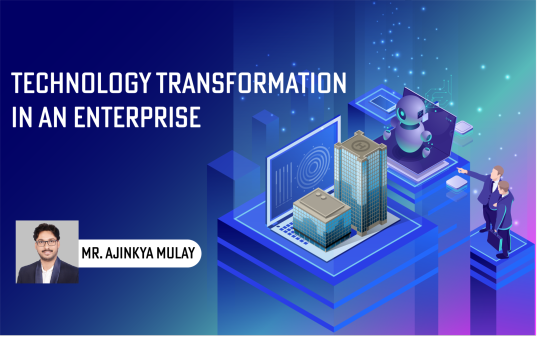
Welcome to our special interview series, where we talk to people who have been there and done that. In this edition, we have Ajinkya Mulay, who is the Head of Blue Ocean at AIQod. Let’s dive into his story, the obstacles he faced, his successes, and the important lessons he has learned throughout his journey of Technology based transformation.
With technologies like Generative AI taking the world by storm, businesses are under more pressure than ever to keep their tech up to date and use the newest tools and solutions as technology continues to advance at an unparalleled rate. Enterprise technology improvements are crucial for businesses looking to maintain their competitiveness, increase productivity, and simplify operations. These improvements, however, could potentially come with significant challenges, like budgetary constraints. We’ll talk about the numerous difficulties that companies encounter when updating their enterprise technology in this interview, as well as explore methods and best practices for handling these updates efficiently. Whether you work in IT or are a business executive, this debate will give you insightful information about the world of enterprise technology updates and give you the skills and expertise you need to compete in the fast-paced digital environment of today.
Why is technology upgrade important
As we all know, technology plays an important role in everyone’s life, and to solve new-age business problems, we can’t look at the same old technologies. Technology upgrades help in many aspects, like UI/UX, speed, and security, with fewer implementation cycles. Here are some examples of the cons of remaining with older technologies:
Scalability issues may arise for older systems built with monolithic architecture, but if your tech stack is updated and you switch from monolithic to microservice-based architecture, it will benefit you in a big way.
Building Responsive Applications on all devices and OS would have been exceedingly challenging as front-end design was only reliant on HTML and CSS. With less coding and quicker delivery, frontend technology advancements like HTML5, SCSS, Bootstrap, Material UI, and Service Workers (PWA) will meet these challenges very quickly. In short there are many benefits of being always on the latest technologies.
AIQod used to work on which tech stack earlier?
In 2016, we were using the PHP Laravel framework and MySQL as our backend database.
I understand that you were pivotal in changing the tech stack from PHP to Mean stack, how did you do it?
We were utilizing PHP and MySQL to build a product, as I indicated earlier, but after some time, it started to become a barrier when we tried adding new features and managing unstructured data. As a team, we made the deliberate decision to move the product to the new stack, but it was not an easy choice because we were not putting much work into the migration, which slows down the creation of new products. But after that, my technical team and top management held a brainstorming session where we identified the pros. and cons of this decision, We have already decided to use a MEAN stack after having shortlisted new stacks to migrate to, conducting research, speaking with users of the stack, and considering the product plan. We developed a migration plan after the team had unanimously approved and finalized the MEAN stack. Since we are switching from SQL to NoSQL, creating a MongoDB schema was the first thing we did. Then, because our PHP stack had previously been monolithic in nature, we opted to employ a microservice design for our backend. To determine how many microservices we should have when we begin migrating, we performed a logical breakdown of our monolithic architecture. And this is where my contribution comes in: I wrote the first MEAN stack program and structure for the platform on which we started migrating and completed the entire migration in a few months.
What are the technologies AIQod is working on/leveraging presently and how it is performing?
As mentioned earlier, currently we are using the MEAN stack as our base, which includes Angular 14, NodeJS, Node MongoDB 6.0, and Express JS. We also use Python to solve problems related to AI/ML. The platform also uses Redis for caching. We are pioneers in deploying our solution on the cloud (AWS, Azure, etc.) using Docker images on the Kubernetes cluster.
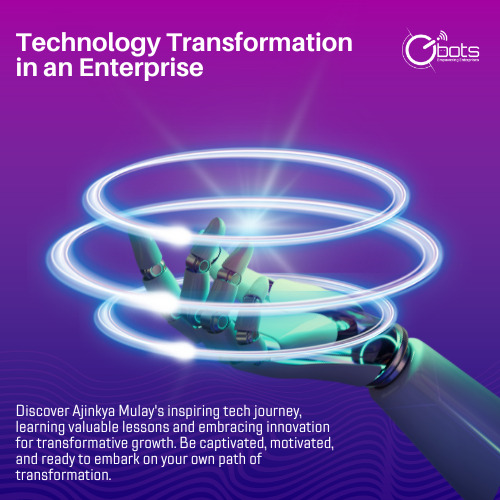
How did you see the technology change in the company throughout the years?
The business never loses sight of technology. We review our stack every quarter and assess any improvements that have been made as well as the addition of new features in accordance with the product strategy. For instance, our front end is currently using Angular 14, although we were using Angular 2 five years ago when we transitioned to Angular we added other layers over the years, such as document digitization based on AI. In the product, we introduced a caching layer utilizing Redis and an NLP layer for categorization and Atlas for databases as a service and added an analytical engine to the solution. We recently integrated with chatGPT to generate automated code and new innovations in technologies will keep coming in where we need to think ahead and keep moving forward and adopting these technologies. We have been constantly on the lookout of technology changes and we were very conscious and planned the upgrades that we need to do on the platform this goes through a rather quick approval process to ensure bureaucracy will not cripple our platform growth.
What are the problems you face while changing the technology or upgrading the technology department?
Any upgrades are first uncomfortable, but understanding what advantages we will experience in the long run always helps. Knowing the new technology is the first issue we encounter when it is implemented, thus learning the technical details of the new technology might be difficult if there isn’t a team member with experience who has already worked with it. A major issue that will arise in the first few months after a technology upgrade is, in my opinion, the team’s acceptance of the change. To get around this, I first built a straightforward prototype with a folder structure. All the vital tools needed for this stack, which facilitates streamlined development and deployment, have been identified. VS Code Studio as a code editor, Postman as a rest client, Swagger for API description, MongoDB Compass for GUI querying, and Jenkins for creating CI/CD pipelines are a few well-known names. Other developers have held thorough sessions with the team on each subject and component of the new stack after gathering information alongside me, which aids in quicker adoption.
As you lead the whole tech team in the company, how do you leverage people skills for completing the task?
Every member of the team brings a unique set of abilities and talents to the table, whether it be expertise in client communication, troubleshooting complex issues, problem-solving techniques, or specialized tech skills like front-end, back-end, etc. Taking all of this into account, we examined the talent required and gave the assignments accordingly. Additionally, we offered training that will aid with task completion. We have developed a customized syllabus for each technology and divided it into basic, intermediate, and advanced levels as part of our organization-wide knowledge management program. Each level is connected to the assignment, and after review, the team is given access to the different course levels. This program’s knowledge foundation places equal emphasis on soft skills and technology.
What is the issue you faced while managing the team and how do you manage them?
Since each member of your team is unique, a variety of difficulties arise on a daily basis. The difficulty is that a new fresher who has recently graduated from college joins the team and needs to be brought up to speed in order for him/her to get valuable expertise and assist the business in solving this issue. We also give them access to specialized training materials and assignment links. We must always communicate with them at regular intervals in order to understand their perspectives and take appropriate action. We also have weekly 1-on-1 meetings to provide correct counseling regarding their daily routines, etc. People may find it difficult to focus on learning new, advanced skills at work, gradually affecting their performance. We attempt to hold workshops on cutting-edge technical subjects each week to address this issue and keep people informed.
What is the message you want to convey to the younger generation/upcoming talent?
I always tell youngsters that we must continuously improve ourselves and to achieve the same, we should read at least one blog per day about new technological advancements. We should approach every challenge with a positive outlook and vigor. Any technological challenge must first be broken down into a plan of action that will ultimately address the problem more quickly and most importantly be the first one to take the step and be the leader in technology upgrades.
Conclusion-
In today’s fast-paced world, upgrading technology is crucial for businesses. It brings scalability, improved user experience, efficiency, security, and a competitive edge. By embracing technology upgrades, businesses can adapt to market demands, drive innovation, and achieve long-term success. Regular evaluation, improvement, and adoption of the latest tools are necessary for staying competitive and maximizing growth potential.
0 notes